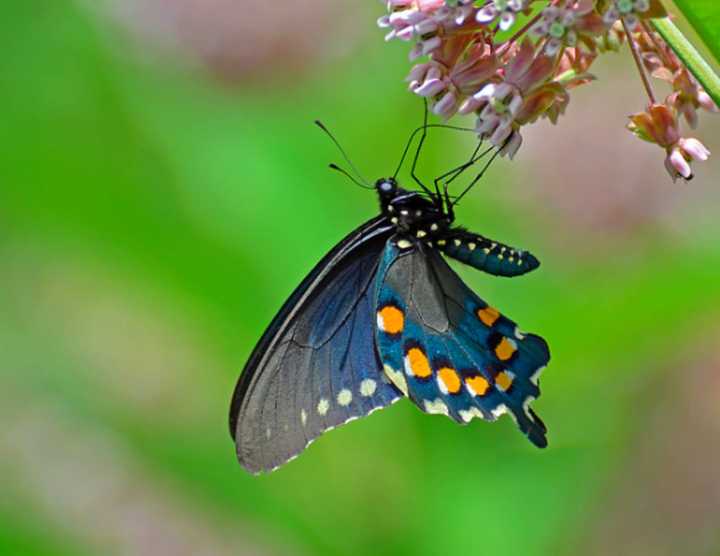Nectar Rewards
Once butterflies reach adulthood, their diet consists mostly of nectar from the flowers of trees, shrubs and perennials. Although some flowering plants attract a variety of pollinators, not all flowers are attractive or accessible to butterflies. There are certain flower features that butterflies find particularly compelling.
Flower Colors
Brightly colored flowers tend to be butterfly favorites, including red, orange, yellow and purple flowers. Butterflies will also be attracted to more subtle colors, when the nectar reward is significant. Sweet Pepperbush (Clethra alnifolia), New Jersey Tea (Ceanothus americanus), and Button Bush (Cephalanthus occidentalis) are examples of native shrubs with white flowers that butterflies love.
Flower Shapes
Flowers that have “landing pads” or clusters of flowers are easiest for butterflies to nectar from. When a butterfly lands on a flower, it “tastes” with its feet, using sensory receptors that allow it to determine whether there is a tasty nectar reward. Flowers like Coneflower (Echinacea purpurea) and Sweet Joe-Pye Weed (Eutrochium purpureum) give butterflies easy access to nectar.
Butterflies are resourceful, and don’t mind making a lateral landing on spiky flowers with a good nectar payoff. Gayfeather (Liatris spicata) and Anise hyssop (Agastache foeniculum) are two such plants.
Flower Choices
When choosing flowering plants for butterflies, skip double-flowered plants with extra petals – these will have little or no nectar reward. To support and enrich an entire ecosystem, including butterflies, favor regionally native plants. Native plants often contribute more to the environment than just nectar. Milkweeds (Asclepias species) and Sunflowers (Helianthus species) serve as both host plants for caterpillars and nectar plants for adult butterflies.
Flower Timing
Different butterfly species will be active at different times of year. Some species, like Mourning Cloaks, are capable of overwintering as adults, and emerge in the spring when the weather warms. Make sure to include flowering native plants in your landscape from early spring through late fall to feed hungry butterflies. Include early blooming native plants like Pussy Willow (Salix discolor) and keep the bloom going through late fall with native Asters (Symphyotrichum species) and Goldenrods (Solidago species).
Butterfly Gardening “Dont’s”
If you want to attract and support butterflies, just say “no” to pesticides. Even some organic pesticides, such as Bacillus thuringiensis (Bt), can have unintended consequences, killing butterfly caterpillars.
Deer and rodent repellents can also be problematic for butterflies if sprayed on host plant leaves or on flowers. Ingredients such as capsicum, garlic, or fish oil, may alter the “taste” of a plant and inhibit a female butterfly from laying her eggs, or deter a butterfly from nectaring on a flower.
Look for the next article with more tips on supporting butterflies in your landscape.
Kim Eierman, a resident of Bronxville, is an environmental horticulturist and Founder of EcoBeneficial. When she is not speaking, writing, or consulting about ecological landscapes, she teaches at the New York Botanical Garden, Brooklyn Botanic Garden, The Native Plant Center and Rutgers Home Gardeners School.
Click here to follow Daily Voice Fairfield and receive free news updates.
